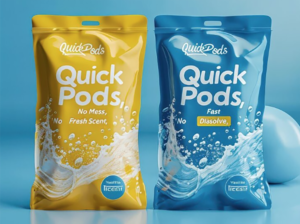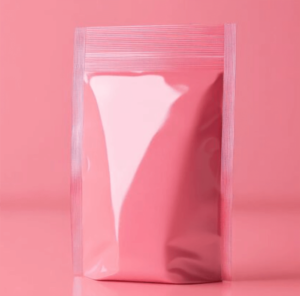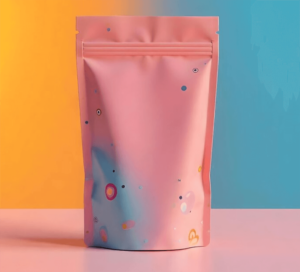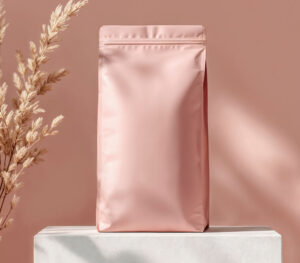With the increasing richness of life, the types of food are also enriching …… different types of food its packaging is also different. Food packaging bags can help food to extend the shelf life, and for some different materials to achieve the preservation effect is different. Food packaging is commonly used in aluminum foil bags, its use must meet certain sealing requirements can be, which also to ensure that the sealing degree of aluminum foil bags. The common and more stringent sealing method, is the heat sealing method. Heat sealing method is to fuse two layers of aluminum foil together, this fusion is to make the two layers of aluminum foil into one layer, will not occur cracking or fracture and other problems, and at the same time, there will be no leakage problems, so as to achieve the sealing requirements. Food pouches are manufactured according to the requirements of the function, so that the packaging can achieve a certain effect of use.
Excellent barrier performance
Moisture resistance: Aluminum foil has extremely low moisture permeability, which can effectively block external moisture from entering the bag, preventing the food from deterioration and mildew due to moisture, and prolonging the shelf life of the food. For example, some dry food, such as potato chips, nuts, etc., can maintain its crispy texture by using aluminum foil packaging.
Oxygen barrier: Aluminum foil can be an excellent barrier to oxygen, preventing the food from contacting with oxygen and oxidation reaction, avoiding the rancidity of oils and fats, oxidative loss of vitamins, and change of color and flavor in the food. Like moon cakes, cakes and other foods containing more fat, aluminum foil packaging can prevent the oxidation of oil and fat to produce a harry smell.

Shading: Aluminum foil has a strong light-blocking effect, which can effectively prevent the food from being irradiated by ultraviolet rays in sunlight or light and trigger photochemical reactions, and protect the nutrients and quality of the food. For example, some vitamin-rich foods, such as fruit juice, jam, etc., can reduce the photodegradation of vitamins by using aluminum foil packaging.
Good performance of aroma preservation: aluminum foil can prevent the loss of food aroma, while preventing the outside world odor into the bag, to maintain the unique flavor of food. For example, tea, coffee and other foods with unique aroma, aluminum foil packaging can well retain its aroma.
Excellent heat sealing performance: Aluminum foil has good heat sealing performance, which can be closely combined with other packaging materials such as plastics through the heat sealing process to form a hermetically sealed package, ensuring the integrity and hermeticity of the package and preventing the leakage of food and the entry of external pollutants.
Provide physical protection: Aluminum foil has a certain degree of strength and toughness, which can play a physical protection role for food, preventing food from being damaged by extrusion and collision during transportation, storage and sales. For example, chocolate and other easily deformed food, aluminum foil packaging can play a supporting and protective role.
Enhance the aesthetics of packaging: aluminum foil has a metallic luster and bright appearance, which can enhance the grade and aesthetics of food packaging, attract the attention of consumers and enhance the market competitiveness of products. For example, some high-grade candies, chocolates, etc. are often packaged in aluminum foil to show their delicacy and high quality.
Aluminum foil packaging can be classified in different ways, the following are some common classification methods and specific classifications:

Classification by material structure
Pure aluminum foil packaging: made of 100% aluminum, it has excellent barrier, thermal conductivity and corrosion resistance. It has a strong barrier to light, oxygen and moisture, which can well protect the food from the influence of the external environment, and is often used to package some foods with high requirements for freshness, such as high-end chocolate, medicines, etc.
Aluminum foil composite packaging: Aluminum foil is combined with other materials (such as plastic, paper, etc.) through the composite process to form packaging materials with a variety of properties. For example, when aluminum foil is compounded with plastic, it has both the barrier property of aluminum foil and the flexibility and heat sealing property of plastic; when aluminum foil is compounded with paper, it combines the barrier property of aluminum foil with the environmental friendliness and printing adaptability of paper, which is widely used in the packaging of food, beverage, daily chemical and other industries.
Classification by application
Food packaging: this is the most common application field of aluminum foil packaging. It is used to package various kinds of food, such as meat, seafood, pastry, candy, tea, coffee and so on. Different foodstuffs have different requirements for packaging, for example, aluminum foil pouches for meat and seafood usually need to have good moisture and oxygen barrier properties to prevent food from deteriorating; aluminum foil pouches for tea and coffee emphasize more on light shielding and aroma preservation to maintain their unique flavors and aromas.
Pharmaceutical packaging: When aluminum foil is used for pharmaceutical packaging, it is required to have strict hygiene standards and barrier properties to ensure that the drugs are not affected by external factors during the validity period and to maintain the stability and effectiveness of the drugs. Commonly, aluminum foil packaging for pharmaceuticals includes blister packaging and aluminum-plastic composite bag packaging.
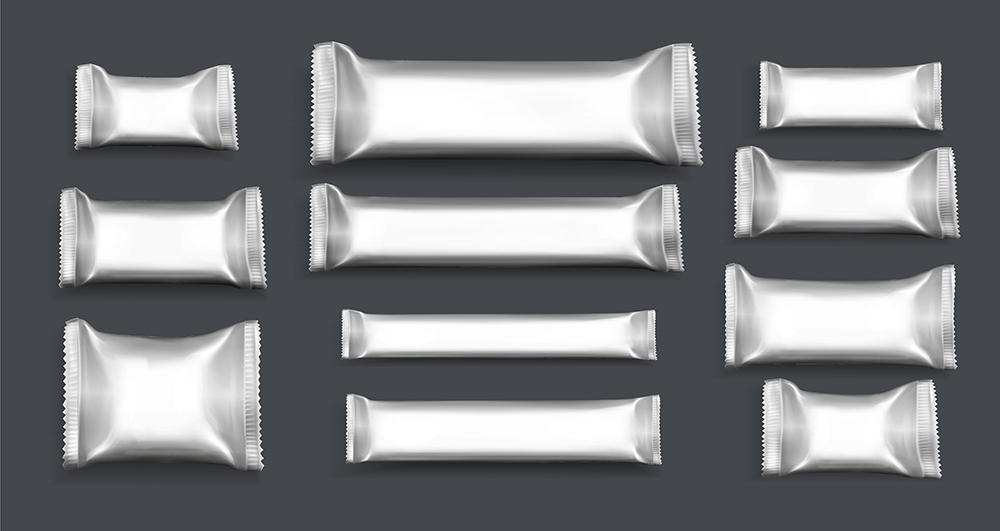
Daily chemical products packaging: such as cosmetics, shampoo, shower gel and other daily chemical products will also use aluminum foil packaging. For cosmetic packaging, aluminum foil can provide a good barrier to prevent the active ingredients in the product from being oxidized or deteriorated, and at the same time, it can also enhance the aesthetics and texture of the packaging; in the packaging of liquid products such as shampoos and shower gels, aluminum foil composite pouches can achieve good sealing and leakage prevention performance.
Packaging for other industrial uses: Aluminum foil packaging is also used in some industrial fields, such as electronics and machinery. For example, electronic components are usually packaged in aluminum foil pouches to play the role of anti-static, moisture-proof and protection of components; in the packaging of mechanical parts, aluminum foil can prevent the parts from rusting and being bumped by the outside world.
Classification by Packaging Form
Aluminum Foil Pouches: this is one of the most common forms of aluminum foil packaging, available in various shapes and sizes, such as three-side-sealed pouches, four-side-sealed pouches, stand-up pouches, zipper pouches and so on. Aluminum foil pouches have good sealing and barrier properties, which are convenient for carrying and storing food, medicine and other items.
Aluminum foil box: usually used to pack some food that need to be heated or baked, such as quick-frozen food, baked food and so on. Aluminum foil boxes have good thermal conductivity, which can heat the food quickly and evenly in the oven or microwave, and at the same time can keep the shape and taste of the food.
Aluminum foil rolls: mainly used in industrial packaging or large-scale food packaging, such as when food processing factories package large quantities of food, they use aluminum foil rolls for winding and packaging to achieve an efficient and convenient packaging process. In addition, aluminum foil rolls are also used in some building insulation materials as moisture-proof and heat-insulating layers.
Aluminum foil blister packaging: commonly used in the packaging of medicines and some small foodstuffs. By heat-sealing aluminum foil with a plastic hard sheet to form a blister, placing the medicine or food in the blister, and then sealing it with aluminum foil, this form of packaging can effectively protect the product from extrusion and contamination, and at the same time, it is convenient for consumers to access.

